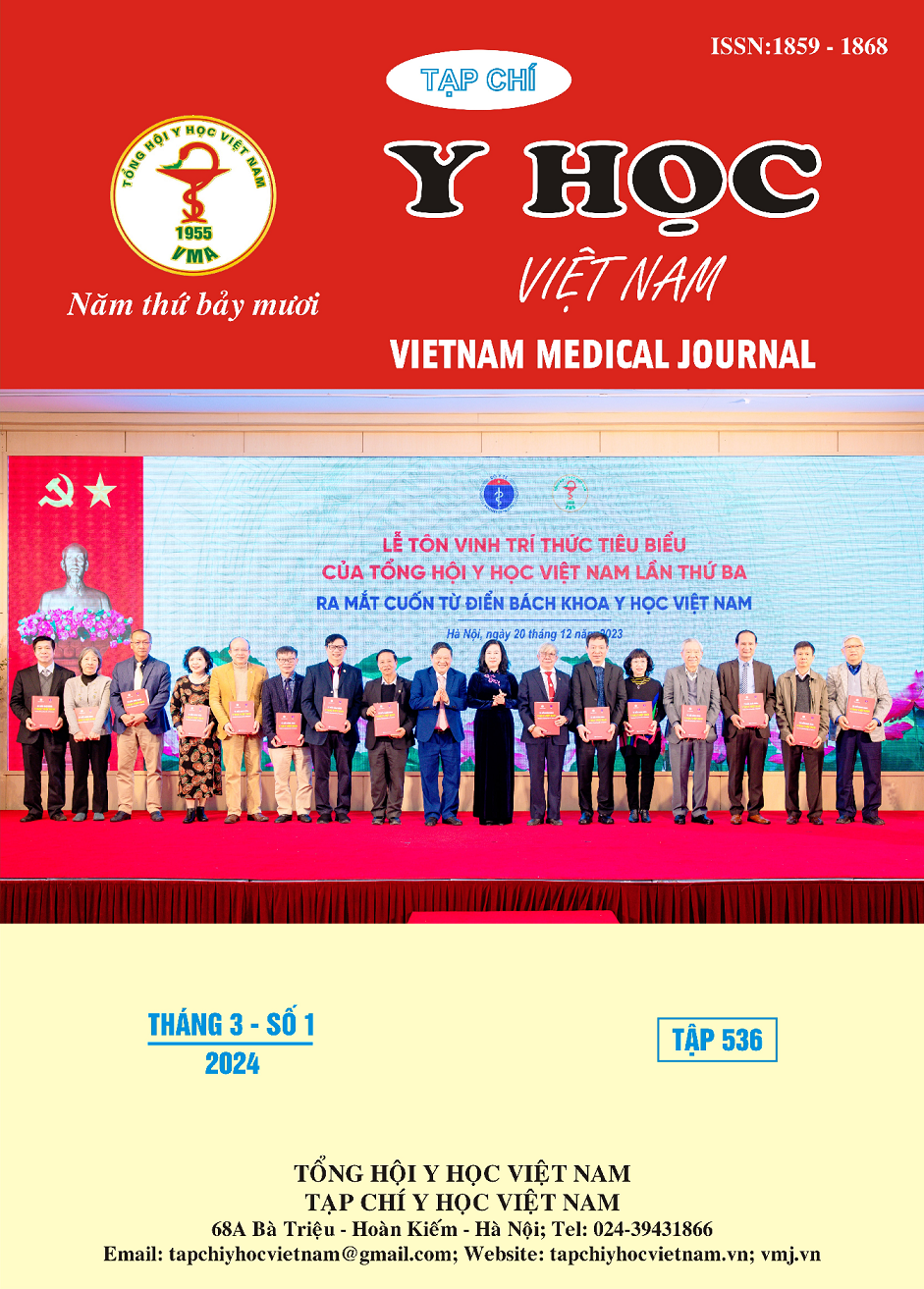CARDIAC AUTONOMIC NEUROPATHY IN TYPE 2 DIABETES’S PATIENTS AT TAM ANH GENERAL HOSPITAL IN 2022 – 2023
Main Article Content
Abstract
Objective: Describe clinical manifestations, Ewing tests result and factors influencing the Ewing tests result in type 2 diabetes patients. Subjects and methods: Descriptive cross-sectional study on 75 type 2 diabetes patients at Tam Anh general Hospital from 10/2022 to 06/2023. Result: The mean age of the study group was 63,15 ± 10,03, the majority of patients are aged 60-69 (37,33%). There is no significant differences exist between males and females in the rate of cardiac autonomic neuropathy. The clinical manifestations in the early stage are tarchycardia at rest, urinary disorders. The clinical manifestations in late stage are palpitation, postural hypotension, exercise intolerance, chest pain, dyspenya. The rate of cardiac autonomic neuropathy in type 2 diabetes is 41,33%. The majority of patients are diagnosed in early stage. The rate of cardiac autonomic neuropathy is higher in type 2 diabetes patients have been diagnosed for more than 5 years, smoking, using alcohol, dislipidemia, hypertension, obesity and HbA1C >7%. Consclusion: Cardiac autonomic neuropathy have a high rate in people with type 2 diabetes, higher in patients with many risk factors. Clinical manifestations are poor and non-specific. Therefore, it is necessary for using the Ewing test to diagnose this complication, especially in the early stage when the clinical manifestations are not clear.
Article Details
References
2. Home, Resources, diabetes L with, et al. IDF Diabetes Atlas | Tenth Edition. Accessed May 5, 2023. https://diabetesatlas.org/
3. Rolim LC de SP, Sá JR de, Chacra AR, Dib SA. Diabetic cardiovascular autonomic neuropathy: risk factors, clinical impact and early diagnosis. Arq Bras Cardiol. 2008;90:e24-e32. doi:10.1590/S0066-782X2008000400014
4. Agashe S, Petak S. Cardiac Autonomic Neuropathy in Diabetes Mellitus. Methodist DeBakey Cardiovasc J. 2018;14(4): 251-256. doi: 10.14797/mdcj-14-4-251
5. Gæde P, Vedel P, Larsen N, Jensen GVH, Parving HH, Pedersen O. Multifactorial Intervention and Cardiovascular Disease in Patients with Type 2 Diabetes. N Engl J Med. 2003; 348(5): 383-393. doi: 10.1056/ NEJMoa021778
6. Diabetes Control and Complications Trial (DCCT): Results of Feasibility Study. The DCCT Research Group | Diabetes Care | American Diabetes Association. Accessed May 5, 2023. https://diabetesjournals.org/care/article/10/1/1/768/Diabetes-Control-and-Complications-Trial-DCCT
7. Nguyễn Thế Thành. Góp phần nghiên cứu phát hiện biến chứng thần kinh tự chủ tim mạch ở bệnh nhân đái tháo đường trong điều kiện Việt Nam. Published online 1995.
8. Phạm Kiều Anh Thơ. Nghiên cứu bệnh thần kinh tự chủ tim mạch trên bệnh nhân đái tháo đường típ 2. Tạp Chí Dược Học Cần Thơ. 2017;8.
9. Trần Thị Kim Thư, Đỗ Trung Quân. Nghiên cứu biến chứng thần kinh tự chủ tim mạch bằng trắc nghiệm ewing trên bệnh nhân đái tháo đường type 2. Tổng hội Y học Việt Nam. Published online 2016:91-94.
10. Hoàng Trung Vinh. Nghiên cứu sự biến thiên nhịp tim và huyết áp liên quan đến thần kinh tự chủ tim mạch ở bệnh nhân đái tháo đường týp 2. Tạp chí Y học Việt Nam. Published online 2004:26-32.


